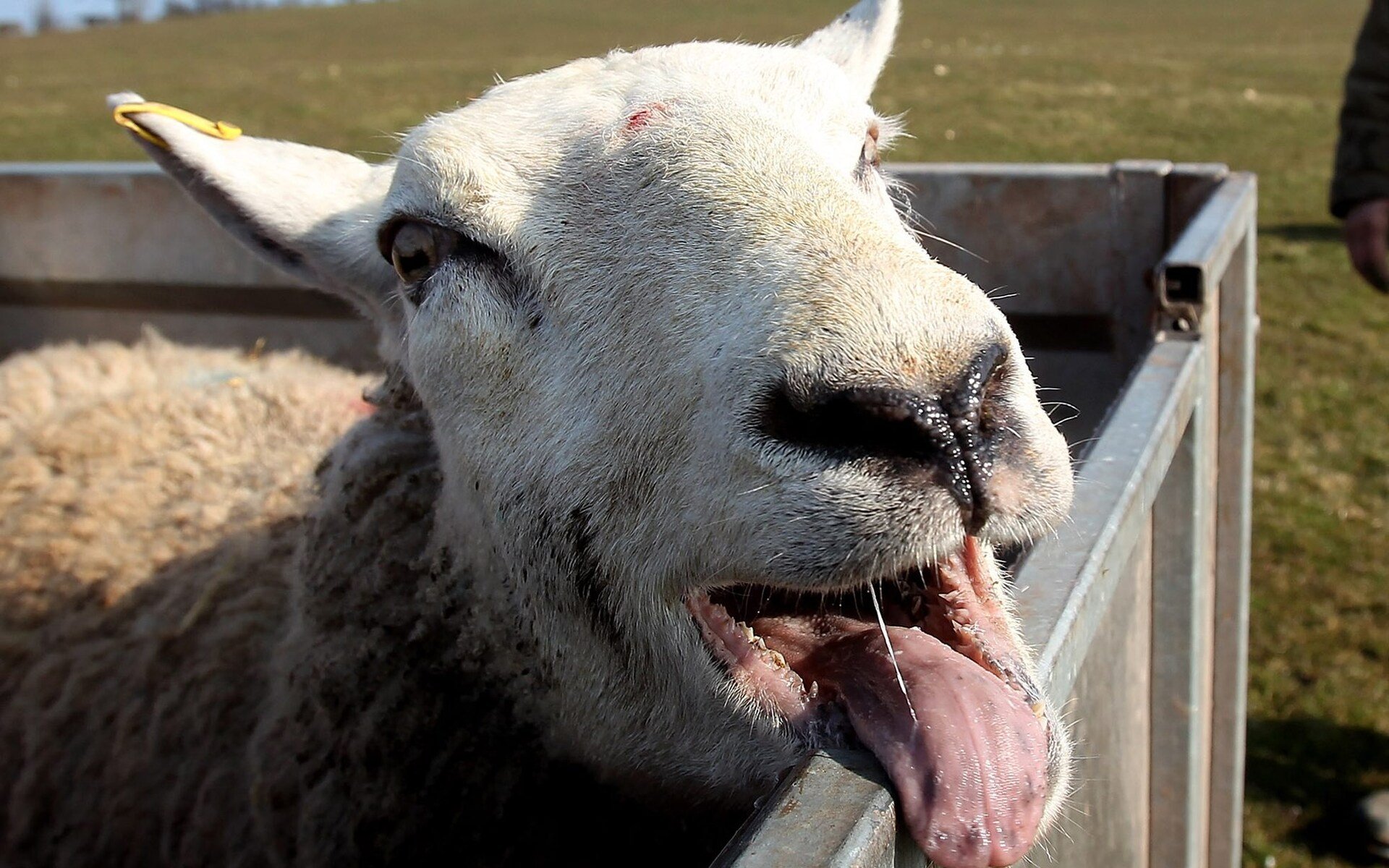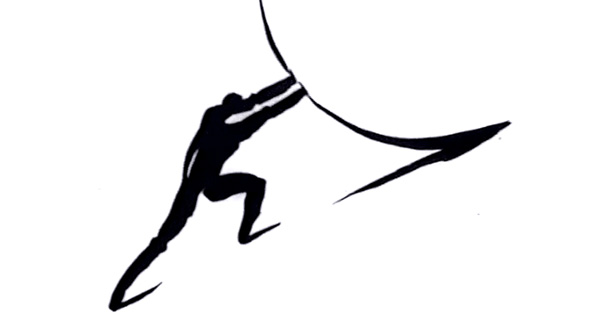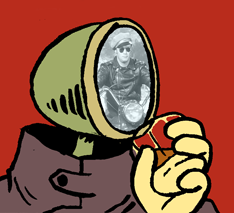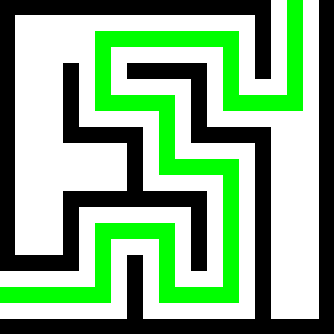I once heard “to keep your tailgate from being stolen” but that seems like it’d be a rare case.
Sometimes backing in seems easier than backing out
The real answer, sometimes the geometry makes more sense to back in 🤷♂️
Geometry is a lot of it. It also makes seeing much easier when pulling out. When backing in, I can easily see the traffic lane around me, and they can see me pretty easy as well (I’m the asshole blocking up the whole place). When driving out, only a smaller portion of my vehicle needs to enter the traffic lane before I have a clear view of any opposing traffic. For the case of nosing it, I have a clear view while pulling in; but, when pulling out I need to get most of my vehicle out into the traffic lane, before I can see anything.
When I have to park in a particularly narrow spot, I find backing in easier due to the better vantage point of the camera.
It’s not just the camera, it’s the geometry. A car can fit into a narrower space from a narrower lane backing in.
Yeah, has to do with where the turning wheels are positioned. It’s like with forklifts having the wheels turn in the back instead of the front.
Especially if your car has a rear camera.
I’ve driving long enough that I can “feel” my way through parking normally, but sometimes I just want to play the minigame.
It’s also easier to see oncoming traffic because some assholes will not stop.
deleted by creator
Safer when pulling out of parking stall. Less blind spots.
Although I don’t back in. I drive through from one spot to the next in front of me. So I can drive out.
The old pull-through. Some places insist on putting those damn concrete Toblerone blocks in front of you to prevent that sort of thing.
Keep a watchful eye when doing so, because I have seen many an argument break out in a parking lot when someone was trying to pull through at the same time someone else who couldn’t see them was trying to pull in to the same space from the outer side. Bonus points if they boop noses in the process. Somehow nobody ever seems to arrive at the simple conclusion, in such cases, of party A just reversing a couple of feet back into the first space to let party B take the second one.
The only issue with pulling-through in a parking lot is one-way lanes with angled spots (the majority of parking lots in my area) because then you’re pulling forward against the flow of traffic or have to make an extremely sharp turn upon exiting. It’d be fine with straight spots or two-way lanes, but people still do it in the former circumstance and end up driving the wrong way.
I knew a girl in high school who was pulling through a spot too fast and got into a head on collision. Now I’m so paranoid about pulling through
Oooh la-la, fancy parking.
Me too, whenever possible, otherwise I back in to show off my superior driving (and parking) skills.
There’s a reason a number of large companies that self-insure mandate backing in for all their vehicles (Schlumberger, Cargill); it’s demonstrably safer practice that results in less accidents when leaving the parking space. You can see everything when you back in that was there when you pulled up, and when you pull out, you’re right up front looking forward into the lane as you pull out. You quickly learn how to back in, even without a backup camera, if you learn how to use your mirrors.
It is by far the statistically less accident prone method.
This is why I do it.
You know how the surroundings are now and you don’t know how they are going to be when you have to drive out again. Makes sense to prepare for the unknown
Because you have more control and visibility both when you get in and get out.
In and out of the parking spot right?
Actually having to sit and watch these morons attempt to back in in the first place says otherwise.
Now imagine having to sit and wait and watch them back out instead. Ugh.
People back out into wide open thoroughfare far more easily and quickly than their shitty backing in between two vehicles.
I wait longer for back-in’s every time than I do for back-out’s.
Sounds like projection.
Lol you cant park? that’s soooo uncool.
Go practice.
I can and have parallel parked a giant van on a busy downtown LA road very quickly. I passed my original driving test in one of the largest SUVs on the market at that time (my parents were idiotically obsessed with large vehicles. I’ve driven some of the largest rental box vans. I have zero crashes on my record. I also know how to drive a manual and have changed timing belts and do my own oil and who fucking cares cause I know you don’t.
Not projection. Fuck people who back in. Especially when they suck at it. Especially especially when they suck at it in a pointlessly oversized vehicle.
It was a joke. Chill.
I have way more maneuverability backing into a space.
Think of it in terms of circles (well, arcs, really) . If you front park in a space perpendicular to the road, your front wheels make a large circle and your back wheels a smaller one. The parking space needs to be big enough to accommodate the larger circle. If you back into the same space, the larger circle happens on the road.
Was looking for this one.
It takes advantage of right-of-way to avoid collision while backing.
I’m following you. When you decide to back in to your parking space, you have the right-of-way over the lane until you have completely left it. I have to yield to you, even if you come to a complete stop in the lane of traffic. While your vision and attention is compromised due to backing, I am responsible for avoiding you.
When you are attempting to back out of the parking spot and into my lane, you do not have right-of-way until you are fully established in the lane. Despite your vision and attention being compromised due to backing, you are also responsible for avoiding me. I don’t have to yield to you until you are completely within the lane.
I support this narrative.
Not because it is logical, BUT BECAUSE IT IS FUCKING RIGHT!
GET IT, CHARLOTTE?
I DON’T HAVE EYES ON MY CAR’S TAIL-LIGHT TO SEE YOU WERE COMING TOWARDS ME.
Unless I am going to be putting stuff into the trunk, backing in is better, it’s more dangerous to back the car out of the space than into it.
Backing in is the correct way to parallel park too.
Backing in is the correct way to parallel park too.
That’s because the rear axle is immovable.
Not only makes it easier to leave when you need to, as you can see everything that you might hit or might hit you.
But going backwards means you can more easily line up in the space as you have more control over your angle.
Like parallel parking is essier when reversing as you dont need to correct once in the space. Just 45 degree to the kerb and straighten up and you are in. Going forward parallel parking takes loads of correction or needs a really big gap to fit in to.
I worked at a job site prone to flooding so it was mandated to speed evacuations. I liked it and kept the habit.
Then some misogynist asshat told me it’s a masculine thing to do and I should be careful to come across more ladylike. So added on a layer of spite and anti-bigot defenses to why I keep doing it.
“Your driving is threatening my fragile ego, could you please be worse than me at it?”
What a douche
That’s the softest. Just the weakest. Disreputably fragile. The secondhand shame is radioactive, I need iodine. I can’t even cringe because my face went numb.
What the actual fuck
Obviously so everyone knows I’m better than them
Backing into a parking bay where the amount of traffic in the bay is close to zero and visibility is great allows you to drive out into the street facing forward where you can see what traffic is coming.
If you drive forward into a bay then you have to back out of it into the street where you cannot see anything except what’s directly behind you and you have little to no visibility sideways, unless the bays next to you are empty, so essentially you’re backing out with your fingers crossed, hoping that nothing will hit you.
Moreover, the traffic rules, at least where I live, specify that a reversing vehicle has to give way to everyone.
As a bonus, when you’re loading things, you’re not standing in the street with your back to traffic.
In other words, learn how to back into a bay.
Because then I don’t have to reverse out, which is far more difficult
Reversing in is safer than reversing out.
Much easier to park AND drive away. I see very few disadvantages really
- People/oncoming cars/kids are more likely to be in the road than in the spot I’m parking
- I have better visibility when I’m facing forward than when I’m in reverse
Therefore I would rather reverse into the spot where people/cars/kids are least likely to be and drive forward into the place people/cars/kids are most likely to be. I personally almost always back in to be safer towards pedestrians and avoid getting hit by other cars.












